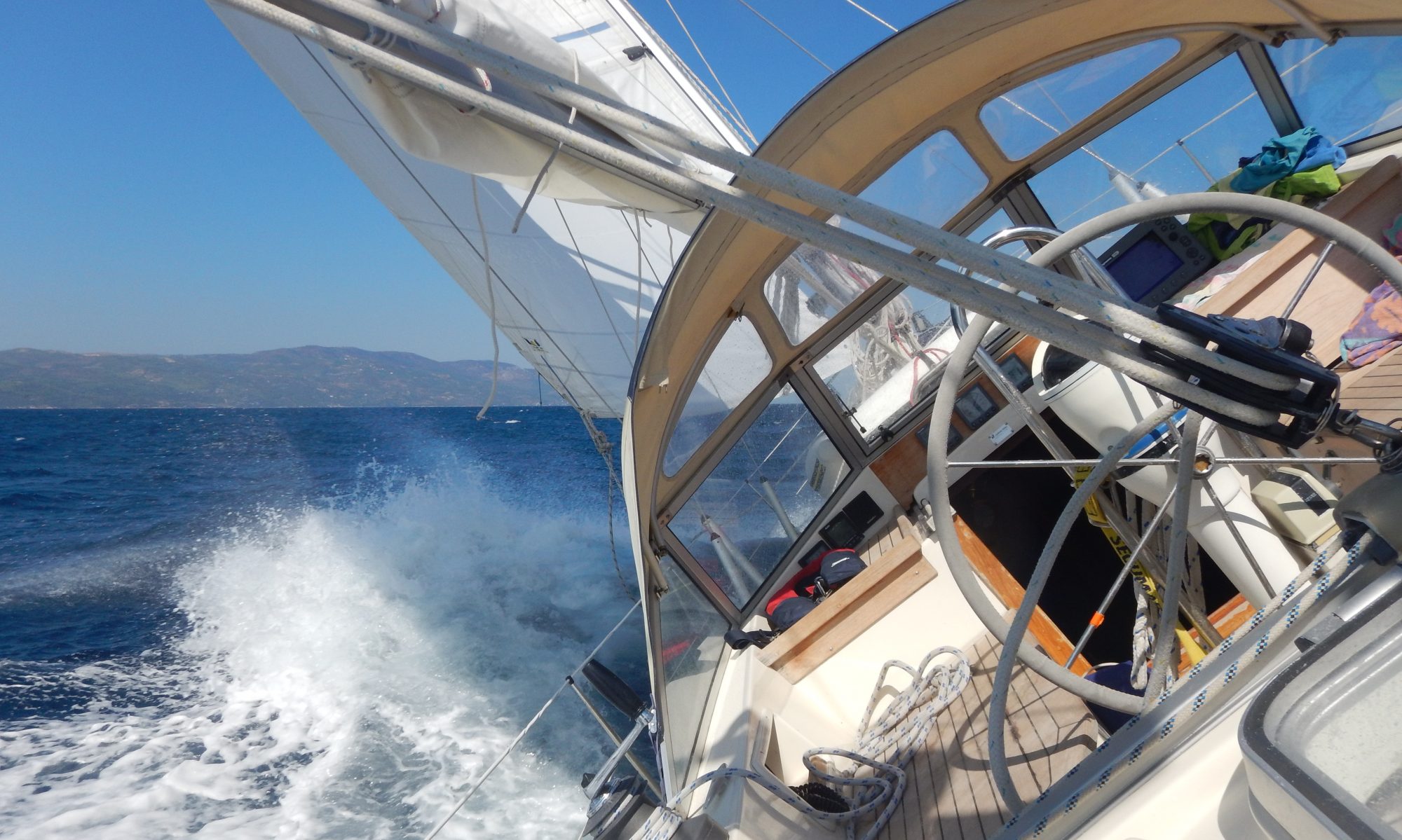Rudder removal and repair – part 2
The sailing season 2018 has almost begun and it is time for an update on the ongoing repairs and what has been going on over the past 3 months:
 Making a new pin on the lathe
Making a new pin on the lathe
Back in Germany I reworked the parts of the lower bearing and made a new pin. I used “Essmatur” for the Pin as proposed by Hallberg Rassy in their repair instruction. It took me some time to find out what “Essmatur” was. It is an older Swedish designation for a dezincification resistant brass alloy (DZR brass) much easier to obtain if you ask for CW602N which is essentially a leaded arsenical brass (CuZn36Pb2As). The arsenic provides the dezincification resistance and the alloy is supposed to be suited for applications in seawater environments.
Some dimensions:
- Original bore size: 35mm
- Original pin diameter: 34.5mm
- Max wear inside the bore: at the location where the pin ended in the upper part of the bearing with the diameter of the hole being 35.8 mm
- Max wear of the pin: 33mm diameter in the middle
- New bore size after rework: 36mm
- New pin diameter: 35.6mm
 Careful alignment of the hinge parts under the drilling machine ensured that the axis of the enlarged opening remained perpendicular to the contact surface.
Careful alignment of the hinge parts under the drilling machine ensured that the axis of the enlarged opening remained perpendicular to the contact surface.
 This is the tool that was used to rework the holes.
This is the tool that was used to rework the holes.
 My friend and colleague Robert provided some professional help which was highly appreciated!
My friend and colleague Robert provided some professional help which was highly appreciated!
 The result couldn’t be any better.
The result couldn’t be any better.
 I also made myself some plates (these were made out of Tin Bronze, CuSn12) which I will need for aligning and fixing the position of the bearing to the skeg (the old alignment plates can be seen on the left side of the picture).
I also made myself some plates (these were made out of Tin Bronze, CuSn12) which I will need for aligning and fixing the position of the bearing to the skeg (the old alignment plates can be seen on the left side of the picture).
Back in Greece I tried putting everything back together. Hallberg Rassy says in the instruction, that a tube must be used for the alignment of the lower bearing if it was removed, in order to get it in line with the shaft axis. I used the rudder shaft upside down together with an adaptor which fitted onto the rudder shaft on one side (40mm) and the (enlarged) hole of the bearing on the other side (36mm).
After some experimenting and a lot of head scratching, I finally had to accept that I would never get the parts aligned as they should be because when they were put together at Hallber Rassy, the lower bearing axis must not have been in line with the rudder shaft axis, but off set by about 5mm. It is of course likely that this is not the first time the assembly is being taken apart, and was not put together properly again.

 The misalignment is obvious
The misalignment is obvious
Anyway, some comfort can be derived from the fact that the assembly did work flawlessly for 35 years until I took it apart. I am confident though, that I will find the right position for the alignment plates that I made and get everything back in a proper working order, but first I have to apply some layers of epoxy primer for osmosis prevention since the area is perfectly accessible with the rudder removed.
….more on “Rudder removal and repair – Part 3”
